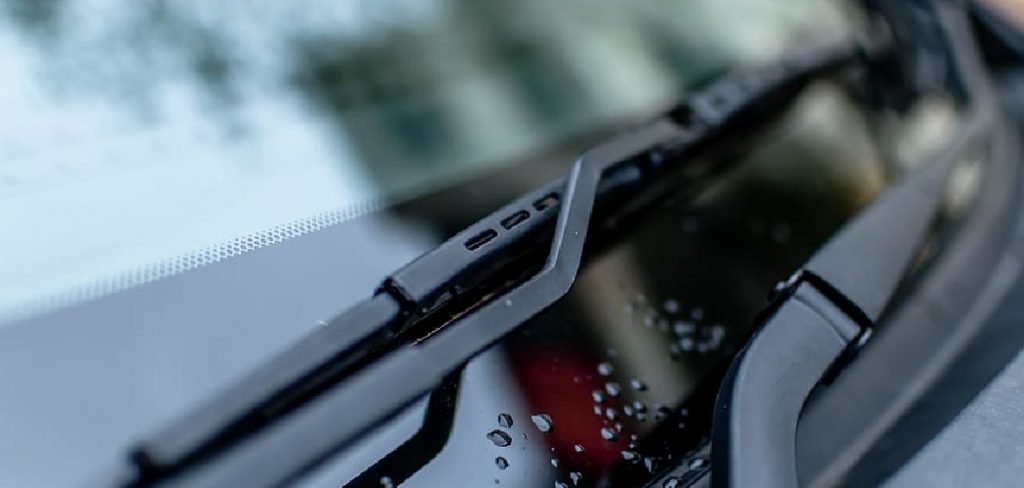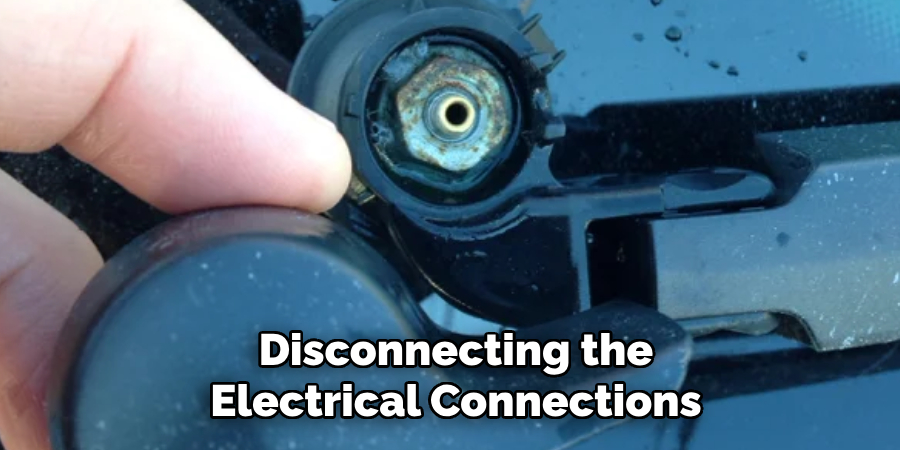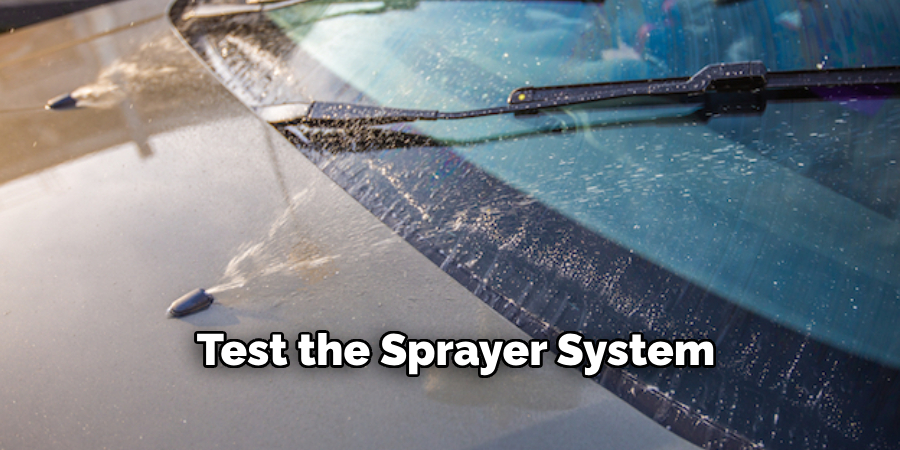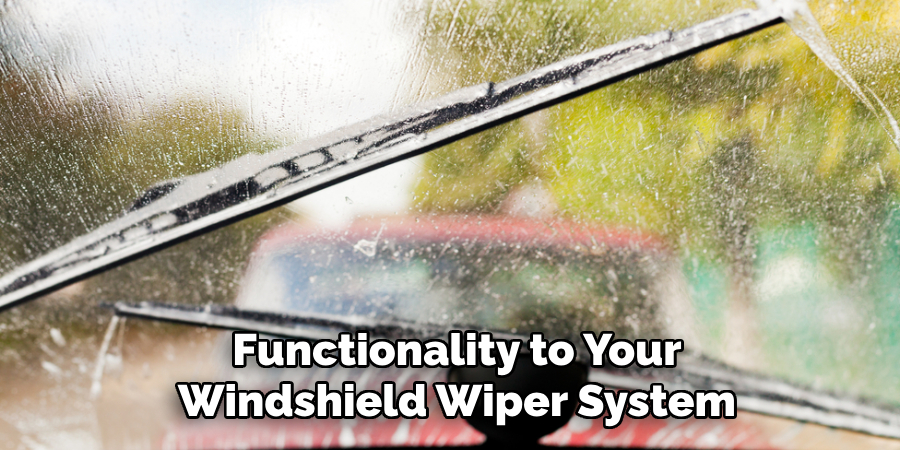A malfunctioning windshield wiper sprayer can hinder visibility and create unsafe driving conditions, especially in bad weather. Fortunately, diagnosing and fixing the issue is often straightforward and can be accomplished with some basic tools and a little patience. This guide will walk you through the common causes of windshield wiper sprayer problems and provide step-by-step instructions on how to fix windshield wiper sprayer.

Common Issues with Malfunctioning Windshield Wiper Sprayer
Before attempting repairs, it’s important to identify the root cause of the problem. Here are some of the most common issues:
- Clogged Nozzles
Dirt, debris, or frozen water can block the sprayer nozzles, preventing fluid from dispensing properly.
- Empty or Low Washer Fluid
Sometimes, the sprayer won’t work simply because the washer fluid reservoir is empty or too low to pump out fluid effectively.
- Damaged or Disconnected Hoses
The hoses that carry washer fluid from the reservoir to the nozzles can become damaged, cracked, or disconnected over time.
- Faulty Washer Pump
The washer pump, which is responsible for pushing fluid through the system, can fail or weaken, leading to spraying issues.
How to Address Common Windshield Wiper Sprayer Problems
Once you’ve identified the cause of the malfunction, you can take the following steps to resolve the issue based on the specific problem:

1. Clogged Nozzles
Use a pin or needle to gently clear any debris from the nozzles. For stubborn clogs, try using compressed air or a mixture of water and vinegar to break up the blockage.
2. Empty or Low Washer Fluid
Refill the washer fluid reservoir with an appropriate windshield washer solution. Avoid using plain water, especially in colder climates, as it can freeze.
3. Damaged or Disconnected Hoses
Inspect the washer hoses for visible cracks, leaks, or disconnections. Replace damaged hoses or reconnect them securely to both the nozzles and the washer fluid reservoir.
10 Methods How to Fix Windshield Wiper Sprayer
1. Check the Washer Fluid Level
Before jumping into more complex repairs, the first step is to ensure that the washer fluid reservoir has enough fluid. Sometimes, the issue with a windshield wiper sprayer is as simple as running out of washer fluid, which can prevent the sprayers from operating. Open the hood of your car and locate the washer fluid reservoir. Most cars have a translucent reservoir that allows you to easily see the fluid level. If the fluid is low, refill the reservoir with windshield washer fluid. Be sure to use the correct type of fluid recommended for your region, especially in colder climates where antifreeze is necessary to prevent freezing.
2. Inspect the Sprayer Nozzles for Clogs
A common problem with windshield wiper sprayers is clogged nozzles. Over time, dirt, debris, and mineral buildup from the washer fluid can accumulate in the nozzles, blocking the flow of fluid onto the windshield. To fix this, start by inspecting the nozzles for any visible obstructions. Use a needle, pin, or small wire to gently poke into the nozzle to clear away any debris. If the nozzle is still clogged, you can soak it in warm soapy water to help loosen any residue, followed by a careful cleaning. In cases of severe clogging, you may need to replace the nozzle entirely.
3. Test the Windshield Wiper Sprayer Pump
If the sprayer nozzles are not receiving any fluid despite having enough washer fluid, the issue may lie with the windshield wiper pump. The pump is responsible for pushing the washer fluid through the tubing and out of the nozzles. To test the pump, turn on the car’s engine, activate the windshield wiper sprayer, and listen for the sound of the pump running. If you don’t hear any sound, the pump may be faulty. A malfunctioning pump can be caused by electrical issues, a broken motor, or a disconnected wiring harness. If the pump is not functioning, you’ll need to replace it, which typically involves removing it from its housing and disconnecting the electrical connections.

4. Check the Washer Fluid Pump Fuse
If the pump is not working and you can’t hear it running, the issue could be with the fuse that powers the washer fluid pump. A blown fuse will prevent the pump from receiving power, rendering the sprayer system inoperable. To check the fuse, locate the car’s fuse box, which is usually under the dashboard or in the engine compartment. Refer to the car’s manual for the location of the windshield wiper sprayer fuse and use a fuse tester or a multimeter to check if it is still intact. If the fuse is blown, replace it with one of the same amperage rating. A faulty fuse is an easy and inexpensive fix that can restore functionality to the sprayer system.
5. Inspect and Replace the Tubing
The tubing that carries the washer fluid from the reservoir to the sprayer nozzles can become cracked, disconnected, or clogged over time. Inspect the tubing for any signs of damage, such as cracks or splits, which can cause fluid to leak or prevent it from reaching the nozzles. If you find any damaged sections of tubing, replace them with new tubing that fits the same size and type. Ensure that the tubing is securely connected to both the pump and the nozzles, and check for any loose or disconnected sections that might be causing the problem.
6. Clean the Washer Fluid Reservoir
Over time, the washer fluid reservoir can become dirty or contaminated with debris, especially if you’ve used non-standard washer fluid or the reservoir has not been cleaned for a while. If the fluid in the reservoir looks dirty or you notice a buildup of gunk, it may clog the pump and nozzles. To clean the reservoir, drain any remaining fluid and flush the reservoir with clean water. Use a brush to scrub away any buildup or debris inside the reservoir. After cleaning, refill the reservoir with fresh washer fluid and test the sprayer system to see if the issue has been resolved.

7. Check for Leaks in the System
Leaks in the windshield washer system can prevent fluid from reaching the nozzles, causing the sprayers to malfunction. Inspect all the connections in the washer fluid tubing for any signs of leaks, such as wet spots or fluid stains. Pay special attention to areas where the tubing connects to the pump, the nozzles, or any junctions in the system. If you find a leak, replace the damaged section of tubing or tighten any loose connections. Leaks can also occur around the washer fluid reservoir itself, so check for any cracks or holes in the reservoir that might be causing fluid to escape. Repairing leaks is crucial for restoring proper function to the sprayer system.
8. Test the Sprayer System’s Pressure
If the pump seems to be working, the tubing is intact, and there are no visible clogs, the issue could be related to the pressure of the system. The windshield washer system relies on adequate pressure to push the fluid through the nozzles. Low pressure can result in weak or ineffective sprayer operation. To test the pressure, you can temporarily disconnect the tubing from the sprayer nozzles and run the pump. If the fluid comes out in a weak stream, there may be an issue with the pump’s ability to generate enough pressure. If the pump is not able to produce sufficient pressure, replacing it may be necessary.
9. Examine the Windshield Wiper Switch
The windshield wiper switch controls both the wipers and the sprayer system. If the switch is malfunctioning, it can prevent the sprayer from activating, even if the other components are in good working order. If you have ruled out all other potential issues, the switch may be the culprit. To test the switch, you’ll need to inspect the electrical connections for any loose or damaged wires. If you suspect that the switch is defective, you may need to replace it, which typically involves removing the steering column cover to access the switch assembly. Replacing a faulty switch can restore full functionality to your windshield wiper system.

10. Replace the Windshield Wiper Sprayer Assembly
If all else fails and the windshield wiper sprayer system continues to malfunction despite troubleshooting, it may be time to replace the entire sprayer assembly. Over time, parts of the sprayer system may wear out, including the pump, nozzles, tubing, and the wiring connections. Replacing the entire sprayer assembly ensures that all components are new and working in unison. The replacement process usually involves disconnecting the old assembly, removing it from the mounting brackets, and installing the new one. Be sure to follow the manufacturer’s instructions and ensure all connections are secure before testing the new assembly.
Conclusion
Maintaining a fully functional windshield wiper sprayer system is essential for ensuring clear visibility and safe driving, especially during adverse weather conditions. By systematically diagnosing and addressing potential issues such as clogs, leaks, or malfunctioning components, you can restore the system’s performance effectively. Thanks for reading our blog post on how to fix windshield wiper sprayer! We hope you found it helpful and informative.
